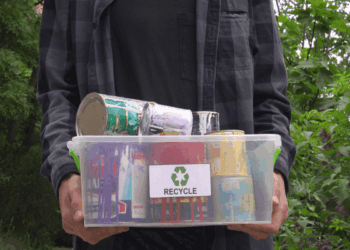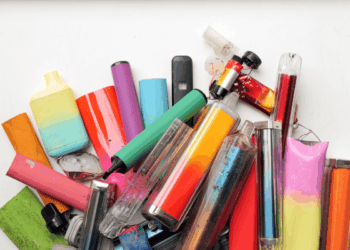The recyclability and compostability of materials covered under California’s extended producer responsibility law for packaging got an update recently, as did the baseline for single-use plastic reduction.
In 2023, more than 2.9 million tons of plastic were used in single-use packaging and plastic food-related items, the state estimated. Those 2.9 million tons were made up of 171.4 billion plastic components, according to the study.
The state’s EPR law for packaging, SB 54, directs producers to reduce single-use plastics by 25%. Using 2023 as a baseline, producers would need to reduce plastic usage by 725,000 tons, or about 43 billion plastic components.
“This report establishes a baseline measurement to ensure that California achieves the nation’s strongest source reduction targets for producers to sell less single-use plastic packaging and food service ware, as required by the Plastic Pollution Prevention and Packaging Producer Responsibility Act,” the report stated.
Using a third-party service, Accenture, the California Department of Resources Recycling and Recovery developed a model based on publicly available data on plastic manufacturing, trade, distribution and sales. Food-related plastic estimates were based on the number of meals eaten out or at home using disposable plastics.
The report noted that Accenture collected confidential data during the study, but no confidential data was ultimately used in generating the model.
Covered material category updates
CalRecycle also published an updated list of materials covered under SB 54, as required by the law.
The list was first published on Dec. 28, 2023. The categories were updated on July 1, 2024, and the most recent update altered recyclability and compostability determinations for those covered material categories.
Under the most recent list, the following categories are considered recyclable:
- Glass bottles and jars with and without plastic components.
- Glass with two or more sides measuring less than 2 inches with and without plastic components.
- Several kinds of containers made of aluminum, with and without plastic components.
- Several kinds of containers made of other metals, with and without plastic components.
- Kraft fiber with and without plastic components.
- Molded fiber without plastic components.
- OCC, paperboard, white paper and mixed paper with and without plastic components.
- PET bottles, jugs, and other rigids, both natural and pigmented.
- HDPE bottles, jugs, pails and buckets and other rigids, both natural and pigmented.
- PP bottles, jugs, and other rigids.
The following categories are not considered recyclable:
- Other glass.
- Ceramics.
- Metal with two sides measuring 2 inches or less that has plastic components.
- Molded fiber with plastic components.
- Aseptic and gable-top cartons.
- Waxed cardboard with or without plastic components.
- Paper and fiber with two sides measuring 2 inches or less, with and without plastic components.
- PET, PP and HDPE film and flexibles.
- LDPE, PVC or PS of any kind.
- PP utensils.
- Plastics designed for composting.
- Textiles.
- Wood.
The following categories are considered compostable:
- Kraft paper, molded fiber, OCC, waxed cardboard, paperboard, white paper and mixed paper without plastic components.
- Paper and fiber with two sides measuring 2 inches or less, without plastic components.
- Wood.
- Mixed organics.

























